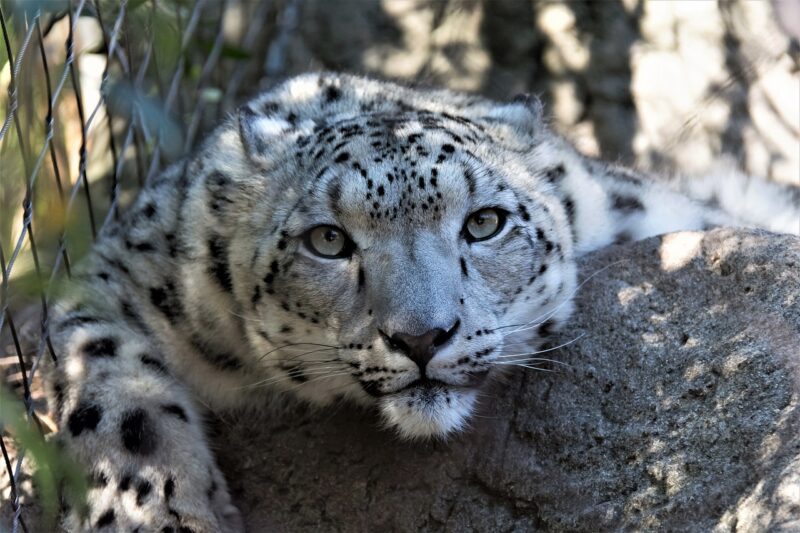How Zoos Collaborate Globally to Protect and Preserve Endangered Species
November 15, 2024

Zoos have evolved from mere entertainment venues to critical centers for wildlife conservation, education, and research. As the threats to endangered species become more severe due to habitat destruction, climate change, and poaching, zoos around the world have recognized the importance of collaboration in conservation efforts. This article explores the various ways zoos collaborate across borders to ensure the survival of endangered species.
1. The Role of Zoos in Conservation
Traditionally viewed as places to observe exotic animals, modern zoos are essential for conservation. They engage in breeding programs, rescue operations, and educational initiatives aimed at raising awareness about endangered species. The Association of Zoos and Aquariums (AZA) outlines specific standards that ensure the proper care and rehabilitation of animals, while zoos actively participate in local and global conservation efforts.
**Key Functions of Zoos in Conservation:**
- Breeding Programs: Many zoos partake in Species Survival Plans (SSPs) to ensure genetic diversity and prevent extinction in species like the California condor and the Arabian oryx.
- Research: Zoos conduct scientific research on animal behavior, genetics, and habitats to inform better conservation strategies.
- Education: Zoos provide educational resources to raise awareness about endangered species and their habitats, helping to foster a sense of responsibility among visitors.
By prioritizing these functions, zoos create impactful partnerships that extend beyond their local communities.
2. Global Collaboration Networks
Collaboration among zoos has never been more critical. Zoos worldwide participate in various global networks to bolster their conservation efforts. Organizations like the World Association of Zoos and Aquariums (WAZA) and the Amphibian Ark network facilitate international cooperation by sharing knowledge, funding, and resources.
**Key Global Networks Include:**
- WAZA: This organization connects zoos globally to enhance conservation through the sharing of resources, techniques, and advocacy efforts.
- IUCN Species Survival Commission: Works to protect species across the globe through collaborative efforts and mobilization of zoos for various projects.
- European Association of Zoos and Aquaria (EAZA): This network focuses on European zoos, advocating for conservation initiatives, and enhancing public engagement through joint projects.
These organizations enhance cooperation and provide a platform for zoos to share best practices and innovations that benefit global conservation efforts.
3. Successful Collaborative Conservation Projects
Zoos have carried out several successful collaborative projects that demonstrate the power of teamwork in wildlife conservation. Here are some notable examples:
**a. The Cheetah Conservation Fund**
Founded in Namibia, this initiative focuses on the education and conservation of cheetah populations. Zoos around the world send funds, research support, and volunteers to aid in habitat restoration and local community engagement.
**b. The Orangutan Conservation Program**
Several zoos are part of a collaborative program working on preserving orangutans’ habitats in Borneo and Sumatra. This program combines breeding efforts and ensures that orangutans bred in captivity can be reintroduced into the wild.
**c. The Suriname Conservation Project**
Partnerships between zoos in North America and Suriname have led to successful efforts to protect the Amazon rainforest and various animal species, including the jaguar. Through research and funding, these zoos contribute to habitat restoration and community engagement initiatives.
Such projects illustrate the impact of collaborative efforts, proving that unified action can enhance conservation results.
4. Fundraising and Resource Sharing
In the face of dwindling resources, zoos increasingly rely on collaborative fundraising and resource-sharing initiatives. This can include joint campaigns or shared fundraising events that draw attention to specific species or conservation efforts.
**Common Fundraising Initiatives:**
- Gala Events: Zoos often partner to host gala events, bringing together supporters and wildlife enthusiasts to raise funds for conservation projects and awareness campaigns.
- Shared Conservation Funds: Zoos pool resources to create dedicated funds for targeted conservation initiatives, maximizing their financial impact.
- Public Awareness Campaigns: Collaborative campaigns can raise awareness about the challenges facing endangered species, driving higher public engagement and funding for conservation efforts.
These collaborative fundraising efforts enable zoos to tackle larger conservation challenges that would be impossible to address individually.
5. Education and Outreach Beyond Borders
Education extends beyond the confinement of zoo walls. International collaborations have driven outreach initiatives, particularly in areas that face significant ecological and conservation challenges. Zoos have engaged with indigenous communities and local schools to impart knowledge on conservation efforts.
**Example Outreach Programs:**
- School Programs: Many zoos develop educational programs that local schools can adopt, fostering a new generation of conservationists who understand the benefits of preserving biodiversity.
- Cultural Exchanges: Programs aimed at sharing knowledge and practices between zoos and communities ensure unique traditions contributing to conservation are recognized and respected.
- Wildlife Workshops: Partnerships between zoos globally enable volunteer opportunities and workshops on wildlife conservation, environmental education, and sustainable practices in communities near endangered species’ habitats.
Through education and outreach, zoos aim to create a culture of conservation among diverse populations worldwide.
Conclusion
As we face the mounting challenges posed to wildlife and their habitats, the collaborative efforts of zoos worldwide are more critical than ever. By forging partnerships and pooling resources, zoos can amplify their conservation impact, protect endangered species, and secure a sustainable future for the planet’s unique biodiversity. These **global alliances**—through breeding, research, education, and outreach—demonstrate that by working together, we can achieve a common goal: the preservation of our world’s wildlife for generations to come.
Embracing collaboration as the new paradigm in conservation allows zoos to remain at the forefront of environmental stewardship, carving out a hopeful path toward maintaining our planet’s precious biodiversity.
By supporting collaborative projects, spreading awareness through education, and committing resources, we can help ensure that endangered species thrive in the wild and in our hearts for years to come.






